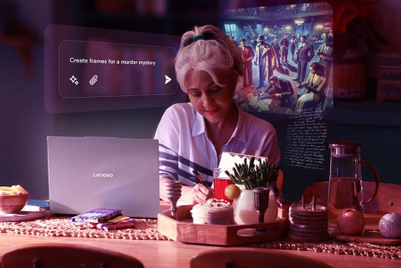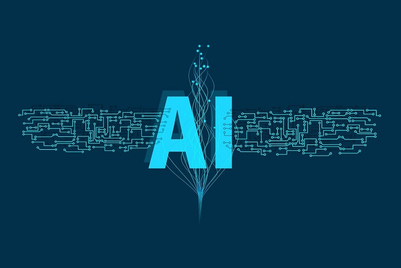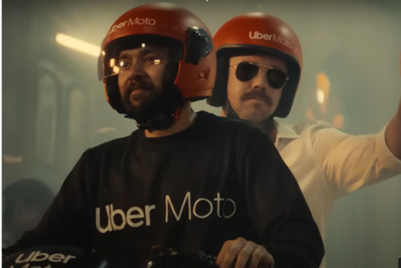
We’re swimming in technology these days, if not drowning in it. With a seemingly never-ending evolution of apps, platforms, big data, little data, systems and ecosystems, protocols, APIs, NFTs, UI, UX, AR, VR, AI, CX and all the acronyms, automation and personalisation, codes, tags, and algorithms...
Is it enough already? Over the past few decades, the marketing industry has made significant investments in technology, data, and performance marketing. But does all the focus on quantifiable returns-on-investment prevent brands from making creative leaps that might truly differentiate them?
Joao Flores, regional executive creative director, at Media.Monks APAC says that it's not an either/or argument. He believes that it's not about investing in creativity vs technology. It's about investing in creativity AND technology, because technology without positive intent is useless.
"To make creative leaps, we definitely need the quantifiables; the tracking and interpretation of data is fundamental to understand the world today, our business challenges and what people expect from brands," says Flores. "It needs, then, creativity to create emotional and functional connections between brands and people."
Ros Horner, executive design director ANZ, at AKQA, says that both technology and creativity can benefit each other. “While data and technology can be used to optimise processes and deal with the basics of growth, it then allows space for the kind of thinking, creativity and work that truly differentiates,” says Horner.
"When all the focus is on quantifiable return-on-investment, it can be crippling to creativity and risk-taking," adds Horner. "But I don’t think the blame for that in the marketing industry is just on data, performance marketing or tech. It’s on the creative culture of your business. To truly differentiate, you need a culture of bravery, of innovation, and pushing ideas that could fail."
Technology overkill? Do we really need it, all of it?
Money talks, as they say. And the sale of technology and licensing of software makes money, a lot of it. OpenAI, the company behind ChatGPT, expects US$200 million in revenue this year and $1 billion by 2024. According to Reuters, OpenAI was most recently valued at $20 billion in a secondary share sale.
It's therefore obvious who stands to benefit and profit most from technologies like AI, and that's the tech giants, their shareholders and investors – i.e. already rich people. But the question remains, do we really need it? Should all technological advancements be viewed as progress? Do companies like Google, Microsoft, OpenAI make decisions based on what's best for the world, or what's best for their shareholders? We already know that answer.
But still, the acceleration of technologies like generative AI continue unabated. All the while nauseating sycophants of big tech trot out endless positivity about the latest tech trend as if it's the second coming. Non-stop tech propaganda.
We hear, ad nauseam, that AI will be a creative enabler. And that AI will not replace creatives. Meanwhile, big tech's proponents, of which there are many, claim that AI is just another tool in the creative toolbox so don't worry about it.
Well, as it happens, many creatives are deeply worried about it. We now know that massive datasets with millions upon millions of copyrighted images are being used to train AI art generators without the creators' knowledge, let alone payment or consent. Generative AI tools like Midjourney, Stability AI and DeviantArt are all facing law suits from artists who are suing the developers for a brazen violation of intellectual property rights.
There is an open letter circulating at the moment calling on certain industries to commit to supporting art made by people, not server farms. There's clearly an argument around the ethics of AI and the issues around content ownership, copyright, plagiarism etc. But what about creativity itself? Can too much technology stifle creativity and the type of creative ideas that are truly unique and stand out?
"We are challenging the idea that AI can somehow render human creativity obsolete," say Ben Hopkins and Morten Legarth, creative directors at VCCP. "We see the use of AI itself as a creative process just like using any other tool, so we think it will balance itself out."
There is widespread consensus, at least in the marketing industry, that the adoption of technologies like generative AI will not impede the flow of creative ideas.
"There will always be individuals who push boundaries and produce remarkable work, regardless of the tools or mediums employed," says Cyril Louis, executive creative director, LePub APAC. "However, what will certainly change is that those who embrace a unique mindset early in their workflow and become adept at utilising generative AI will gain a competitive advantage."
Christian Finucane, founder and creative partner of Sydney independent, The Core Agency, argues that creatives have always absorbed other people's material.
"Great creatives absorb ideas from everywhere, by devouring films, art, music, poetry, dreams, architecture, trees etc. They know nothing is original," says Finucane. "But it’s not where you take things from, it’s where you take them too. AI is a tool that can help speed up the creative process with great inspiration. If you’re a lazy creative, then your work will reflect whatever tools you have, but you might be able to hide a little longer."
More of the same: is creativity in crisis?
Some argue that all this technology breeds a 'sea of sameness'. A world where we're all using the same tools that produce similar results. In the case of generative AI, when all the prompts have been optimised, might it again produce more of the same? Some have labelled it "the age of average", where more and more brands seem content to drift along in a sea of sameness.
Is over-investment and over-reliance on technology, while underinvesting in creativity partly to blame for this ‘sea of sameness’?
"On the contrary, I hold a different belief, says Louis of LePub APAC. The pursuit of measurable return on investment (ROI) will eventually level the playing field, as these tools and strategies become accessible to anyone with adequate planning and budget. As this equilibrium is reached, the only means of distinguishing oneself from competitors is through creative and innovative leaps. The most effective path to fostering brand affinity lies in creativity."
And Jeff Malone, chief strategy officer of Melbourne independent creative agency Town Square says that the best marketers will always be the ones who remember that it's the creativity that sells.
"It’s disruptive, engaging and motivating," says Malone. "It can inspire us, outrage us, make us laugh and become a part of culture, long outliving its media spend. Without creativity (and all its madness), we would have never had the Cadbury Gorilla. And Cadbury wouldn’t have had the massive sales boost it produced."
But what about kids in school who will be raised using these tools? Will their creativity eventually become machine dependent?
"I think it will go the other way," says Finucane. "As tech keeps refining, creative work will become similar and homogenised. So the next generation will look outside of their MacBook for inspiration. They will be encouraged to have real life experiences so they understand how to communicate in real life and their design skills will merely be the window to their thoughts. Sure, a lot of design will look bloody amazing with all the tech on offer, but that’s craft, nothing beats soul."
Malone of Town Square argues that AI should be a wakeup call, and that creativity and critical thinking must be central components of education.
"Surely technology like AI will have its place in classrooms, but hopefully not before we have a better understanding of its effect on child development," says Malone. "The widespread adoption of social media in its early days, and its subsequent impact on children’s mental health, should be a cautionary lesson that gives us pause before we unleash the next new thing in our kids’ schools."
Is it time to invest more in human craft?
Much like the content it produces, we are drowning in technology. But should we allow machines and rapidly accelerating technologies like generative AI, and the 'profit at any cost' interests of big tech, to run roughshod over human craft and creativity?
Flores, regional executive creative director, Media.Monks APAC says that for this new era for creativity we need to stand for human-craft with a positive impact in culture.
"The technological innovation we see in society is a signal of progress, in our industry they enable scale, improve performance and empower automation," says Flores. "But creativity is the multiplier. The differentiator is, and will always be, creativity. That’s ROI. That’s worth the investment."
Creatives have long battled with business and the corporate world. Feeling underpaid, undervalued. Now big tech, AI, is scraping their work and not compensating them for it. We see artists filing law suits against the developers of Midjourney, and writers going on strike in a bid to protest against new threats on their livelihoods and the scary but very real possibility of robots and AI taking their jobs.
"Creatives such as writers or artists never foresaw that their work could be used to train AI that might reduce the need for human creation in the future," says Hopkins and Legarth at VCCP. "Just look at the writers’ strike in the US. In the end though, the use of AI is a creative process that requires human direction so we would argue that investing in AI is investing in humans."
Horner, executive design director ANZ, at AKQA, says that the creators, investors and owners of these tools have the biggest responsibility to build them in ethical ways.
"This includes not ripping off creatives and artists, and of course, we should invest in creative humans alongside creative technology," says Horner. "The best advice I’ve ever heard on how we as creatives remain valued, respected and motivated was from Paula Scher who said every 5 years rip everything up and start again, even if you have a style, even if you’re well known for it and everyone loves it, start again."
And Malone at Town Square says that we should invest more in people period.
"This is a problem for everyone, not just creatives," says Malone. "Creatives have just been insulated from the effects of automation for longer than others. Corporations exist to maximise profits – partly through growth, but also by minimising costs. Their shareholders demand it and their execs’ KPIs depend on it. This is nothing new, but the last few years have seen an unprecedented rise in short-term thinking."
But Malone says there is a silver lining to this short-termism and 'profit over quality' view.
"It usually doesn’t take long for the public to realise ‘good’ sucks and they begin to gravitate to ‘great’ again," says Malone. "Remember the peak of reality television? It was cheap to produce, offered a bit of entertainment and before we knew it, it was everywhere. But it didn’t take too long for audiences to realise what they were missing. They wanted more, and the smart producers out there began creating some of the most intelligent and engaging television that’s ever been made -- to the point television has now eclipsed the film industry in many ways. That’s what ‘great’ looks like. And ‘great’ demands creativity. It demands investment. But the rewards are worth it."


.jpg&h=334&w=500&q=100&v=20250320&c=1)
.jpg&h=334&w=500&q=100&v=20250320&c=1)



.jpg&h=334&w=500&q=100&v=20250320&c=1)
.jpg&h=334&w=500&q=100&v=20250320&c=1)


.jpg&h=334&w=500&q=100&v=20250320&c=1)








